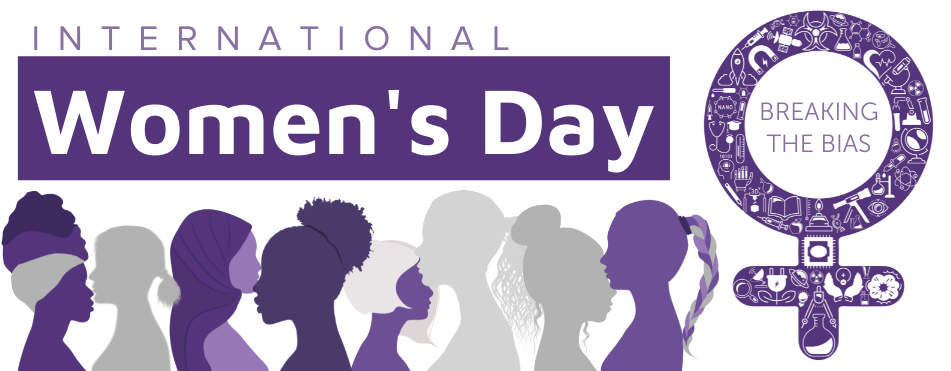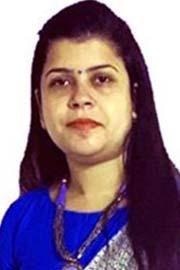
This International Women's Day we spoke to Dr. Pooja Devi, a Principal Scientist at the Central Scientific Instruments Organisation (CSIO), about her career, inspirations, and the participation of women in STEM.
Please can you introduce yourself and the roles you have occupied during your scientific career?
 I am currently working as a Principal Scientist at the Central Scientific Instruments Organisation (CSIO), one of the premier research laboratories of the Council for Scientific and Industrial Research (CSIR), New Delhi. Also, I am an associate professor with the Academy of Scientific and Industrial Research (AcSIR), New Delhi. I was a visiting scholar at Concordia University, Canada under a Canadian Commonwealth fellowship, and at the University of Nebraska, Lincoln, USA, through IUSSTF-Water Advanced Research and Innovation Fellowship.
I am currently working as a Principal Scientist at the Central Scientific Instruments Organisation (CSIO), one of the premier research laboratories of the Council for Scientific and Industrial Research (CSIR), New Delhi. Also, I am an associate professor with the Academy of Scientific and Industrial Research (AcSIR), New Delhi. I was a visiting scholar at Concordia University, Canada under a Canadian Commonwealth fellowship, and at the University of Nebraska, Lincoln, USA, through IUSSTF-Water Advanced Research and Innovation Fellowship.
In addition, I am currently serving the Indian National Young Academy of Science (INYAS) as a Core Committee member and Electrochemical Society of India (ECSI) as governing council member. I am also a member of the National Academy of Sciences, India (NASI).
How did you start out in science, and what inspired you to continue pursuing a profession in STEM?
Because of my interest in science, I took it as my main subject in higher secondary. The early reason to choose STEM was becoming an engineer as an aspiration of a middle-class family in India. I was also influenced by many science programs on Indian TV Channels, especially, "Nano Ki Duniya" by Prof. B.R. Mehta, which made me pursue material science as a post-graduate degree.
In my journey to science, I gradually found STEM, especially research and development (R&D), as a satisfying profession since it is exploratory. Each day is full of new experiences and feels like becoming a curious child again.
Could you describe some of your key research focuses within materials science?
As a material scientist, I have focused in my early career on developing functional materials for water pollutants detection. I have developed materials for fluorescence, colorimetric, electrochemical, and SERS-based detection of heavy metals and organic pollutants in water. In recent times, my research is focused on catalyst engineering for indoor air pollutants degradation and green hydrogen generation from wastewater. I am developing smart heterostructure and hybrid catalysts, engineering their catalytic sites, as well as addressing their scalability challenges for commercial applications.
During your research career, you have developed four new technologies, two of which have been transferred into use in the industry. Could you please outline what these are?
I have developed materials for fluorescence-based detection of arsenic in water, which is transferred to the industry as a part of an integrated device for fluoride, nitrate, and arsenic detection in water. Another transferred technology is doped metal oxides for air pollutants degradation.
We have also developed colorimetric materials and devices for color-based detection of heavy metals/metalloids (selenium and arsenic) and residual chlorine in water. This device enables real-time monitoring of pollutants in the field, and currently we are in discussion with industries for the transfer of this technology. Another technology is a co-development with Ideamines Pvt. Ltd., Noida, and is targeted toward clinicians/front-liners. This technology is a pressurized air-breathing and SARS CoV-2 scavenging wearable device; we named it “V-Treat.” This device treats air with a three-level UVC, PCO, and HEPA treatment. The device is tested for SARS CoV-2 deactivation and is at the approval stage with CDSCO.
You have represented India internationally at various platforms such as the BRICS Young Scientist Conclave and the Shanghai Cooperation Organisation Young Scientist Conclave. How did it feel to be able to represent Indian scientific progress on the world stage?
Yes, it was a proud moment and an honor to represent India in the field of material science for Environment and Energy at BRICS and SCO Young Scientist conclaves. These platforms have also helped me build networks with other young researchers in BRICS and SCO countries.
Are there any particular innovations or research projects ongoing in India that particularly excite you?
The Indian government is focusing on sustainable development goals and self-reliance on technologies, like Make in India, Innovate in India, etc. The government projects on Green Hydrogen, Clean Water under Jal Jeevan Mission, and Clean Air are closer to my interest. I am trying to contribute a little to this big ocean of technological research.

Image Credit: GoodStudio/Shutterstock.com
Besides research, you are also a mentor to undergraduate and postgraduate students. How are you able to balance mentorship alongside your other professional responsibilities, and do you enjoy it?
Yes, I believe training and mentorship are needed to create human resources, and it is a part of my day-to-day routine work. I enjoy sharing my knowledge with the UG/PG/Ph.D. students by teaching them or discussing scientific findings, ideas, and challenges with them.
In my group, I am supervising several PG and Ph.D. students. I discuss my research ideas and guide them with a detailed plan of action for implementation. They are the pillar for the execution of ideas and thus the success of my group. I also believe mentorship is a mutual process of learning from each other and growing together. I train my students from all perspectives, including scientific research, science communication, and leadership.
Looking back over your career, are there any roles or moments that stand out to you as having been particularly significant or enjoyable?
There have been several moments to cherish when I look back on my journey of the last 11 years as a Scientist. I would like to mention a few:
- Translating the developed material into colorimetric field kits and devices by working with an interdisciplinary team.
- Converting the materials into societally relevant solutions and interaction with stakeholders for the same.
- Recognition of research work at the international platform as selected Indian representative for BRICS Young Scientist Conclave and 1st SCO Young Scientist Conclave.
- Recognition of research work by major Indian Science academies, including the Indian Academy of Sciences (IASc), Bangalore; Indian National Academy of Engineering (INAE), New Delhi; National Academy of Sciences (NASI), Prayagraj; in the form of Young Scientist/Engineer Awards.
- Seeing the growth of my mentored UG/PG/doctoral students as independent researchers, especially my 1st Ph.D. student Dr. Anupma Thakur.
- Recognition by the honorable Governor and Chief Minister of Haryana State as “Haryana Yuva Vigyan Ratan Awardee.” I belonged to a small town in Haryana State in India and did my early education under limited resources. This recognition from the same state had made my parents and community proud.
- Getting several international and national recognitions/fellowships.
- Interacting with school students and appreciation by school teachers for the science outreach work being done under the CSIR JIGYASA and INYAS umbrella.
Many individuals have experienced additional hurdles in their professional careers due to their ethnicity and/or gender. Is this something you have experienced, and what more could be done to prevent and address such biases?
Yes, I have had an additional responsibility of looking after my family along with my professional career. At the early start of my career, I actually raised two kids, i.e., my newborn baby (Master Parth Sharma) and my new research lab, establishing myself as an independent researcher. This journey was very challenging, and I faced a lot of hurdles professionally, which is another topic to discuss maybe next time. Personally, due to traveling for meetings, invited talks, etc., and other professional responsibilities, the mental pressure as well as the guilt of making arrangements every time for my son is an additional thing that I need to take care of as a mother since my husband works in another state of the country. I am managing it though with distant family support. In general, the responsibility of the family remains majorly on women. The two-body problem is being faced by several women, especially in the STEM field.
In STEM, another challenge associated especially with women is the freedom or ease of networking, which doesn’t come easy and has many hidden challenges.
Do you have any advice for young women or girls who wish to pursue a career in STEM fields?
My advice to women or girls who are willing to pursue a career in STEM is that it is a challenging field and it demands commitment and time. You should be ready for the same. Passion for research, resilience, networking, and building a support system is the key to a successful career in STEM.
Are there any particular women in science who inspire you?
I have been inspired and influenced by many, however I would like to name a few here: Dr. Vijaya Aggarwala (IIT Roorkee, India), Prof. Chandrima Saha (INSA President, India), Dr. Kiran Mazumdar-Shaw (Biocon, India), Dr. Sangeeta Reddy (Apollo Hospitals, India), and Prof. Marie Curie (two times Noble Prize Winner)
What is your current research focus?
My current research focuses on the engineering of catalytic materials (2D materials, metal oxides, carbonaceous and plasmonic nanostructures) in terms of their defects & heterostructures for efficient charge generation, separation, and transport for indoor air purification and green hydrogen generation. I am also focusing on addressing their scalability issues for commercial applications in these areas.
Do you have any particular goal you hope to achieve before the end of your scientific career?
As a material scientist, I want to contribute significantly to developing sustainable solutions for clean energy and the environment. Also, I want to work towards the inclusivity of women in STEM leadership and create an ecosystem for their equal participation in STEM, especially in India.
Materials science has advanced significantly over the past few decades globally. How do you expect (or hope) to see it develop over the next ten years?
Material science is the core of all the new technologies in all spheres of life. New material discoveries and the unfolding of their unique properties can enable us to develop sustainable solutions for the energy, healthcare, environmental, and industrial sectors. One of the major areas where material science will be contributing significantly to renewable energy, especially green energy, is as a substitute for conventional fossil fuels. This would require hand-in-hand collaboration amongst material science and engineers.
Finally, it is a hard question, but can you think of your favorite memory of being a scientist?
My favorite memory of being a scientist is when my six-year-old son asked me what I do in my office, and then I had to come down to his level to explain what a scientist is and what I do in the lab. He caught all keywords quickly and said he also wants to be an innovator. Another favorite memory is being recognized by the state government with the highest recognition as the young scientist of Haryana state. Coming from a small town and with limited resources, getting this recognition was very much satisfying and is a memorable life event.
More About Dr. Pooja Devi
 I am currently working as a principal scientist at CSIR-Central Scientific Instruments Organisation. I have done my Ph.D. in Engineering Sciences from the Academy of Scientific and Industrial Research, New Delhi, and M. Tech. (Nanotechnology) from Indian Institute of Technology, Roorkee. As a material scientist, I am working in the domain of applied material science, with a focus on developing materials/methods for energy and environmental application. My major research interest includes materials design for Hydrogen production, water/air pollutants degradation, and water pollutants monitoring.
I am currently working as a principal scientist at CSIR-Central Scientific Instruments Organisation. I have done my Ph.D. in Engineering Sciences from the Academy of Scientific and Industrial Research, New Delhi, and M. Tech. (Nanotechnology) from Indian Institute of Technology, Roorkee. As a material scientist, I am working in the domain of applied material science, with a focus on developing materials/methods for energy and environmental application. My major research interest includes materials design for Hydrogen production, water/air pollutants degradation, and water pollutants monitoring.
My research work has resulted in 82 high-impact research publications in reputed journals, 07 edited books, and 20 book chapters. I have also filed 03 patents, 02 design registration, 02 copyright/trademark, and developed 04 technologies. The research work is recognized in terms of prestigious awards and fellowships, including NASI Young Scientist Platinum Jubilee Award (2021), IEI Young Engineer Award, INAE Young Engineer Award (2020), SERB Women Excellence Award (2020), Young Associateship of Indian Academy of Science (2019-22), Haryana Yuva Vigyan Ratan Award (2019), Young Scientist Award (2019) from Indian Science Congress Association, Young Scientist Award (2019) from International Society for Energy, Environment and Sustainability, IUSSTF Water Advanced Research and Innovation (WARI) fellowship (2017), Canadian Commonwealth Fellowship (2010), etc. I am also a young associate/member of the country's major national academies, including INAE, IASc, NASI, and INYAS. Besides research activities, I am actively involved in various science outreach activities under CSIR-JIGYASA, VIGYAN JYOTI, and INYAS programs to motivate school and college students, including girls for science.
Banner Credits: Melitas & M.Style / Shutterstock
Disclaimer: The views expressed here are those of the interviewee and do not necessarily represent the views of AZoM.com Limited (T/A) AZoNetwork, the owner and operator of this website. This disclaimer forms part of the Terms and Conditions of use of this website.